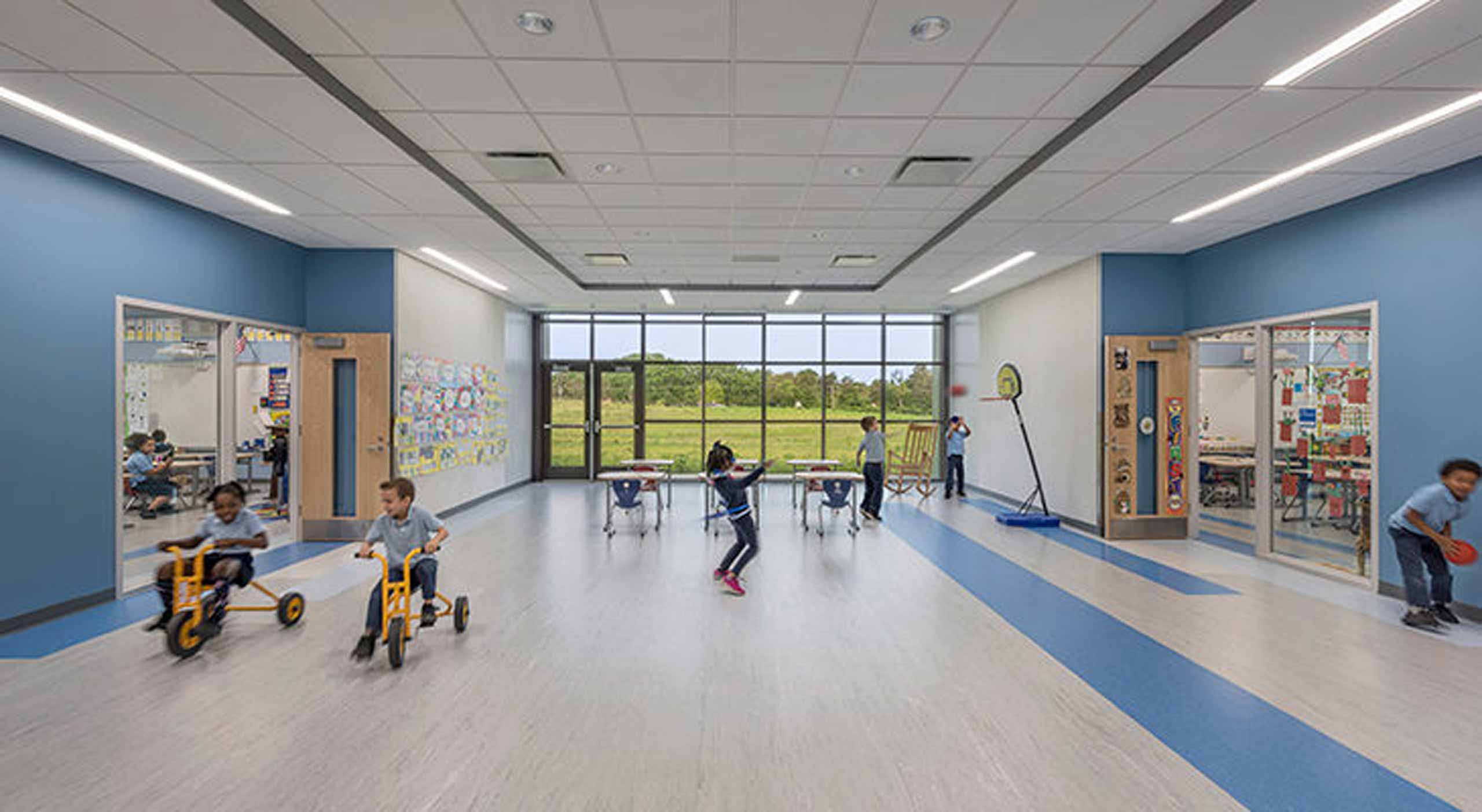
Educators and architects gather to discuss critical issues impacting early learning centers in Ohio
How can color and light support learning? What facilities upgrades promote accessibility and safety? How does seating impact the classroom dynamic? What can schools do about a lack of storage spaces?
Earlier this year, we met with Ohio school district leaders for a roundtable discussion about these and other timely topics related to early learning and architecture. Participants included administrators, a principal, and a director of capital improvements, as well as members of Legat’s Columbus studio.
The educators shared facilities-related problems they’ve encountered, challenges they face, and whether specific trends support the contemporary curriculum. We also started to discuss potential solutions to these obstacles. Below are three concepts that we explored in more detail.
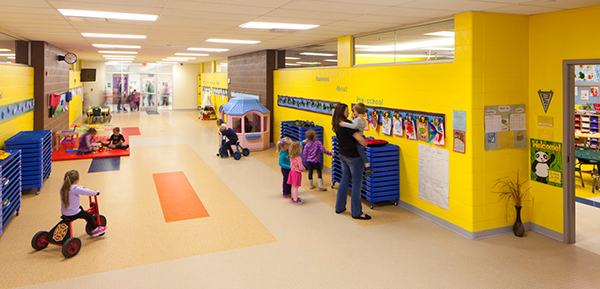
Co-location: Socially Beneficial, Financially Sound
Many early learning providers are looking into co-location, which involves combining an early learning center and another facility with a different, yet compatible function. Examples range from middle or high schools to senior living facilities and community centers. The ELC and its partner can be on the same site or even in the same building.
The benefits of co-location are both social and financial. Joe Neri, CEO of mission-driven lender and real estate developer IFF, covers both of these in his article, “Why community developers should care more about early childhood education.” Neri reveals how his perspective shifted from a “stay in your lane” mentality of only doing housing developments to grasping the long-term benefits of integrating early learning centers.
Co-location can save costs with shared amenities such as dining, outdoor spaces, or other common areas. Think about, for instance, a ground-level early learning center with senior housing above it: students and residents can share a cafeteria and an outdoor courtyard.
Davenport Community Schools (Davenport, Iowa) transformed a 98-year-old elementary school into the J.B. Young Opportunity Center. The first floor of that building houses “neighborhood assets” including a Boys and Girls Club, a boxing club, a culinary arts program, a food pantry, an Art Legacy League, and yes . . . a preK-K early learning center. Moreover, the district’s administrative offices are located on the second floor of that same facility. Imagine all the enhanced learning opportunities with such a diverse collection of tenants.
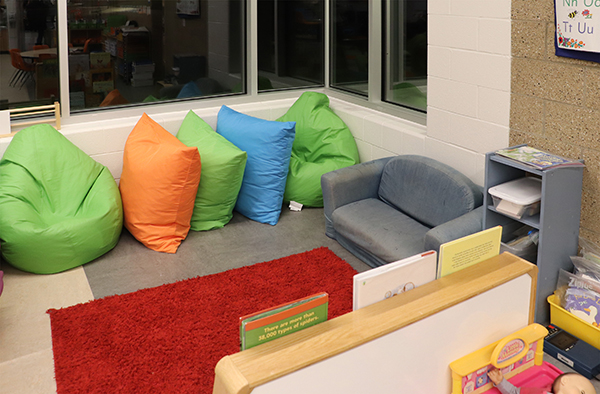
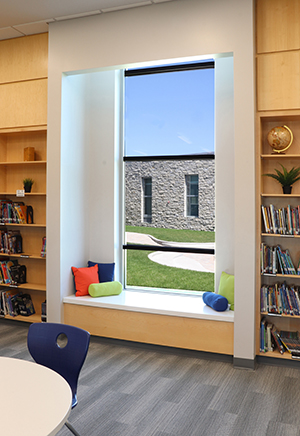
Remember the Introverts
One of the early learning roundtable participants remembered a favorite childhood learning space: she would crawl up into a loft and read. Over the years, we’ve queried many educators about their favorite places to learn. Surprisingly, many of them conjure up more secluded places . . . places to which they can retreat to concentrate.
Nevertheless, with the current emphasis on collaborative environments and team-based learning, architects sometimes get so focused on the “wow” spaces that they overlook the cozier, quiet spaces—call them nooks and crannies—that appeal to more introverted early learners.
Fortunately, there are many spaces that support the introverted personality. For instance, window benches or reading nooks enable students to obtain the solitude they want while remaining within sight of staff.
For a great book on introverts, check out Quiet: The Power of Introverts in a World That Can’t Stop Talking by Susan Cain.
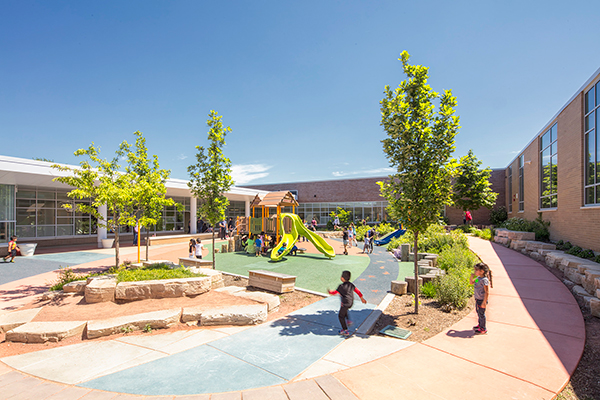
A Different Spin on Outdoor Learning
Outdoor spaces are all the rage, but a key question came up during the early learning roundtable: who’s taking care of these spaces? And what happens when that person(s) becomes unavailable?
Outdoor spaces that are underused or disconnected from the school can get shabby due to lack of maintenance. In a worst-case scenario, the outdoor learning space champion leaves and the outdoor learning area becomes a weed garden.
To prevent this fate, many schools have integrated outdoor spaces into their curricula. Thus, the curriculum-integrated courtyard or learning garden receives much more custodial attention than the disconnected outdoor space only used on occasion.
One focus group participant mentioned a high school’s agricultural program that requires students to tend outdoor areas. This presents another potential benefit of co-location: if a high school or middle school attaches to an early learning center, the older students can manage the outdoor learning spaces as part of their school’s science programs.
Contact us to learn more about early learning design or comment below to share your thoughts on this post.


